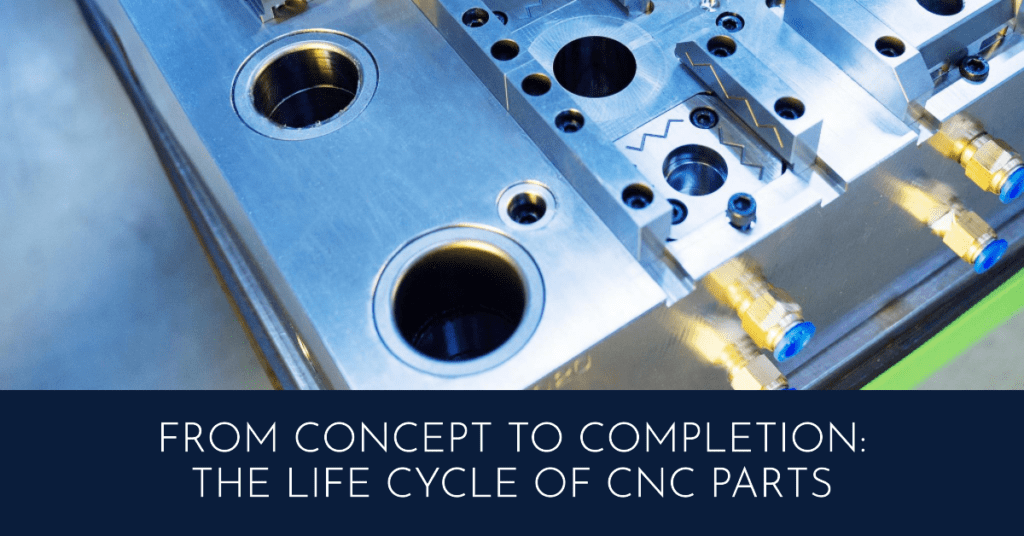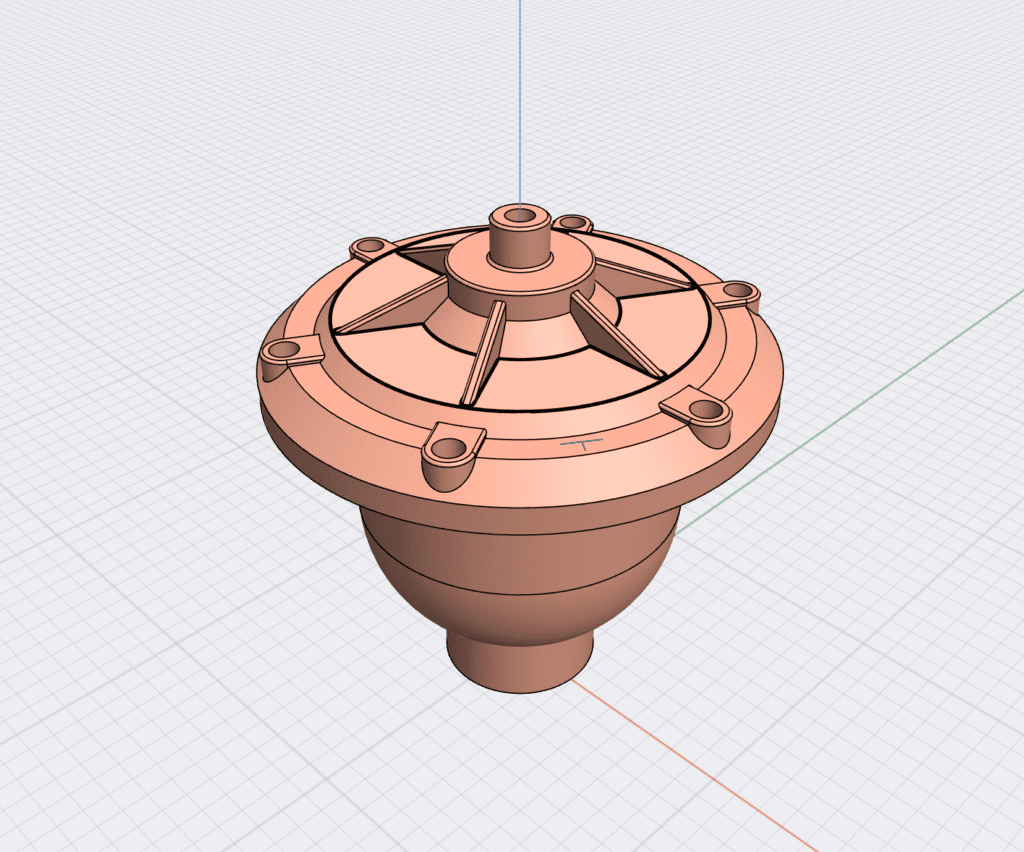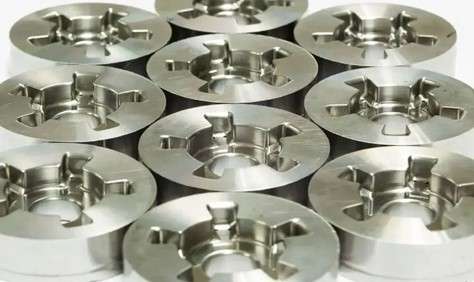
The life cycle of a CNC part starts with a simple idea and culminates in a physical component, precisely designed to fulfill a specific function. This intricate process involves several stages, including design, converting to a machinable model, manufacturing, use, maintenance, and finally, disposal. Each stage in the life cycle of a part plays a crucial role in determining its quality and functionality. Knowing this cycle can give valuable insights into CNC machining, whether you’re an engineer, manufacturer, product designer, or someone with a general interest in manufacturing.
This article discusses the life cycle of CNC parts. It covers the design phase, machinable model creation, machining, use, maintenance, and disposal or recycling. It emphasizes the importance of managing the life cycle of CNC parts.
Phase 1: The Initial Design Phase

The first stage in the life cycle of a CNC part is the design phase, where the part is born from an idea. Here, product designers and engineers work together to translate an idea into a tangible design that can be brought to life. This step involves detailed planning and several iterations to get the design just right. The design phase is conducted using Computer-Aided Design (CAD) software, which allows for the creation of a 3D model of the part.
Key considerations in the design phase include:
- Functionality: The part’s purpose is a critical aspect that determines its design. It is essential to understand what the part is supposed to do, and how it will operate, to create the optimal design solution.
- Environment: The conditions in which the part will be utilized play a significant role in determining the design and material choice. For example, parts designed for harsh environments, such as high-temperature environments, may require heat-resistant materials to function correctly.
- Dimensions: The size, shape, and complexity of the part are crucial considerations in the design process. A larger, more complex part may require more resources and time to manufacture than a smaller, simpler one. However, it is important to note that a larger part may offer better functionality and durability than a smaller one.
- Material selection: Choosing the right material is another critical factor in the design process. The material should be selected based on the part’s purpose, environmental conditions, and dimensions. It must also be durable, reliable, and cost-effective.
- Manufacturing process: The manufacturing process is an essential consideration in the design process. The manufacturing process selected will depend on the material, part dimensions, and complexity. It is crucial to choose a process that is cost-effective, efficient, and produces high-quality parts.
Phase 2: Transitioning to a Machinable Model
Once the design phase is complete, the CAD model is then translated into a format that CNC machines can read and interpret. This translation is carried out using Computer-Aided Manufacturing (CAM) software, which generates G-code, the language CNC machines understand. The G-code contains instructions for the CNC machine to follow during the manufacturing process.
Key considerations in this stage include:
- Part Orientation: The orientation of the part on the CNC machine can significantly influence the final result. A part may need to be repositioned several times during the machining process to achieve the desired result.
- Cutting Paths: The path followed by the cutting tool has a significant impact on the quality of the final product. CAM software helps in determining the most efficient and effective path for the tool to follow.
- Speed and Feed Rates: The speed at which the cutting tool moves and the rate at which material is fed into the machine are crucial factors that determine the quality of the part and the machining process’s efficiency.
Understanding the design phase and transitioning to a machinable model is the first step in creating high-quality CNC parts.
Phase 3: Machining the Part

After translating the design into a machinable model, the CNC machine’s exciting process begins. The G-code, which acts as the CNC machine’s instructions, guides the machine’s movements, allowing it to cut, drill, or otherwise shape the raw material into the final product.
This process involves several sub-steps, such as:
- Choosing the Raw Material: Selecting the right material for your part is crucial. The material’s properties need to align with the requirements of the part, such as strength, durability, and resistance to heat or corrosion.
- Setting up the Machine: Before the machining process begins, the CNC machine must be set up. This includes installing the necessary tools, positioning the raw material, and setting the machine’s speed and feed rates.
- Executing the Machining Process: The CNC machine then follows the G-code instructions to transform the raw material into the final part. This can involve various operations such as milling, turning, drilling, or grinding.
- Inspecting the Finished Part: After machining, the part is inspected for accuracy and quality. This can be done visually or with more precise tools, such as a CMM (Coordinate Measuring Machine).
Phase 4: Part Use and Maintenance
Once the part is machined and inspected, it’s ready for use. Depending on its function, it could be a standalone product or a component of a larger assembly. During its life, the part may require regular maintenance to ensure its optimal performance.
The part is installed in its final location, whether it’s part of a larger assembly or serving as a standalone function. This installation process involves ensuring that the part is properly secured and connected to any necessary components or systems. Once installed, the part can then be put to use, fulfilling its intended purpose. However, the part’s performance during use is heavily dependent on its design and the quality of the machining process used to produce it. Regular maintenance of the part can also play a crucial role in prolonging its lifespan.
Maintenance tasks could include cleaning the part to prevent the buildup of dirt or debris, lubricating any necessary components to ensure proper function, or even replacing certain parts that are subject to wear and tear over time. By taking these steps, the part can continue to operate effectively and efficiently over the long term.
Phase 5: Part Disposal or Recycling
Finally, after serving its purpose, the CNC machined part reaches the end of its life cycle. It can be disposed of, but in keeping with sustainability efforts, recycling is often the preferred choice. Many metals used in CNC machining, such as aluminum and steel, are recyclable.
At this stage, one should consider:
- Disassembly
If the part in question is a component of a larger assembly, it is important to ensure that it is properly disassembled before attempting any repairs or modifications. This process typically involves carefully removing any fasteners or connections that secure the part in place, and taking care to avoid any damage to the surrounding components or structures. Once the part has been successfully disassembled, it can be inspected for any signs of wear, damage, or other issues that may need to be addressed. Depending on the specific circumstances, it may also be necessary to clean or lubricate the part before reassembling it and returning it to its original position within the larger assembly. Taking these steps can help to ensure that the part functions properly and that the larger assembly operates safely and efficiently for its intended purpose.
- Sorting
The materials are meticulously sorted based on their specific types, which in turn aids in efficient recycling. This process of sorting and categorization plays a vital role in ensuring that the materials are properly recycled and not wasted. Additionally, the sorting process allows for easier identification of which materials are suitable for recycling and which are not. As a result, the recycling process becomes more streamlined and creates a more sustainable environment by reducing waste and conserving resources.
- Recycling
Once the materials are sorted, they are transported to a recycling facility, where the processing and reuse of these materials takes place. In the recycling facility, the materials undergo a series of complex processes to ensure that they are properly handled and prepared for reuse, including cleaning, shredding, and melting. Once these processes are completed, the materials can be used to create a variety of new products, reducing the need for virgin materials and minimizing waste. This process not only helps to conserve natural resources but also contributes to the reduction of greenhouse gas emissions, making it a crucial component of modern waste management practices.
What Are the Importance of Life Cycle Management?
Life Cycle Management (LCM) is a key strategy employed by manufacturing businesses worldwide to effectively manage the entire lifecycle of a product, from inception to disposal or recycling. When applied to CNC parts, LCM helps businesses maximize the value of their products while minimizing the environmental impact. This section will discuss why understanding and managing the lifecycle of CNC parts is crucial for businesses.
Here are the primary reasons:
- Cost Efficiency: By understanding the lifecycle of a part, companies can predict and plan for costs associated with each stage. This allows for accurate budgeting and potential cost savings.
- Quality Assurance: Managing the part’s lifecycle, especially during the manufacturing and maintenance stages, helps maintain the part’s quality over time.
- Sustainability: End-of-life strategies like recycling significantly reduce the environmental impact of the parts, leading to more sustainable manufacturing practices.
- Compliance: For industries with strict regulations, lifecycle management helps ensure compliance at every stage, from design to disposal.
Conclusion
In the constantly evolving world of manufacturing, comprehending the life cycle of CNC machined parts is an integral aspect for businesses aiming for efficiency, sustainability, and cost-effectiveness. The life cycle stages – design, transition to a machinable model, machining, use and maintenance, and finally, disposal or recycling – represent a holistic view of a part’s journey. This journey, when managed adeptly, can result in optimized processes, leading to superior quality products, efficient resource utilization, and minimal waste.
Prolean’s CNC manufacturing services are a testament to this understanding. We embody the principles of effective life cycle management in our operations, ensuring that each part we manufacture not only meets high-quality standards but also aligns with environmental sustainability.
FAQs
What is the life cycle of CNC parts?
The life cycle of CNC parts involves several stages, including initial design, transition to a machinable model, machining the part, part use and maintenance, and finally, part disposal or recycling.
Why is it important to understand the life cycle of CNC parts?
Understanding the life cycle of CNC parts allows companies to manage the entire process effectively. It can help in planning for costs, maintaining quality, ensuring sustainability, and achieving regulatory compliance.
How do Prolean’s CNC manufacturing services manage the life cycle of CNC parts?
Prolean’s CNC manufacturing services cover all stages of the part’s life cycle, providing customized solutions, ensuring quality, promoting sustainable practices, and ensuring regulatory compliance.
What sustainable practices does Prolean employ in its CNC manufacturing services?
Prolean prioritizes the use of recyclable materials in its CNC machining processes. Moreover, we ensure that any waste material from the manufacturing process is responsibly disposed of or recycled wherever possible.




0 Comments